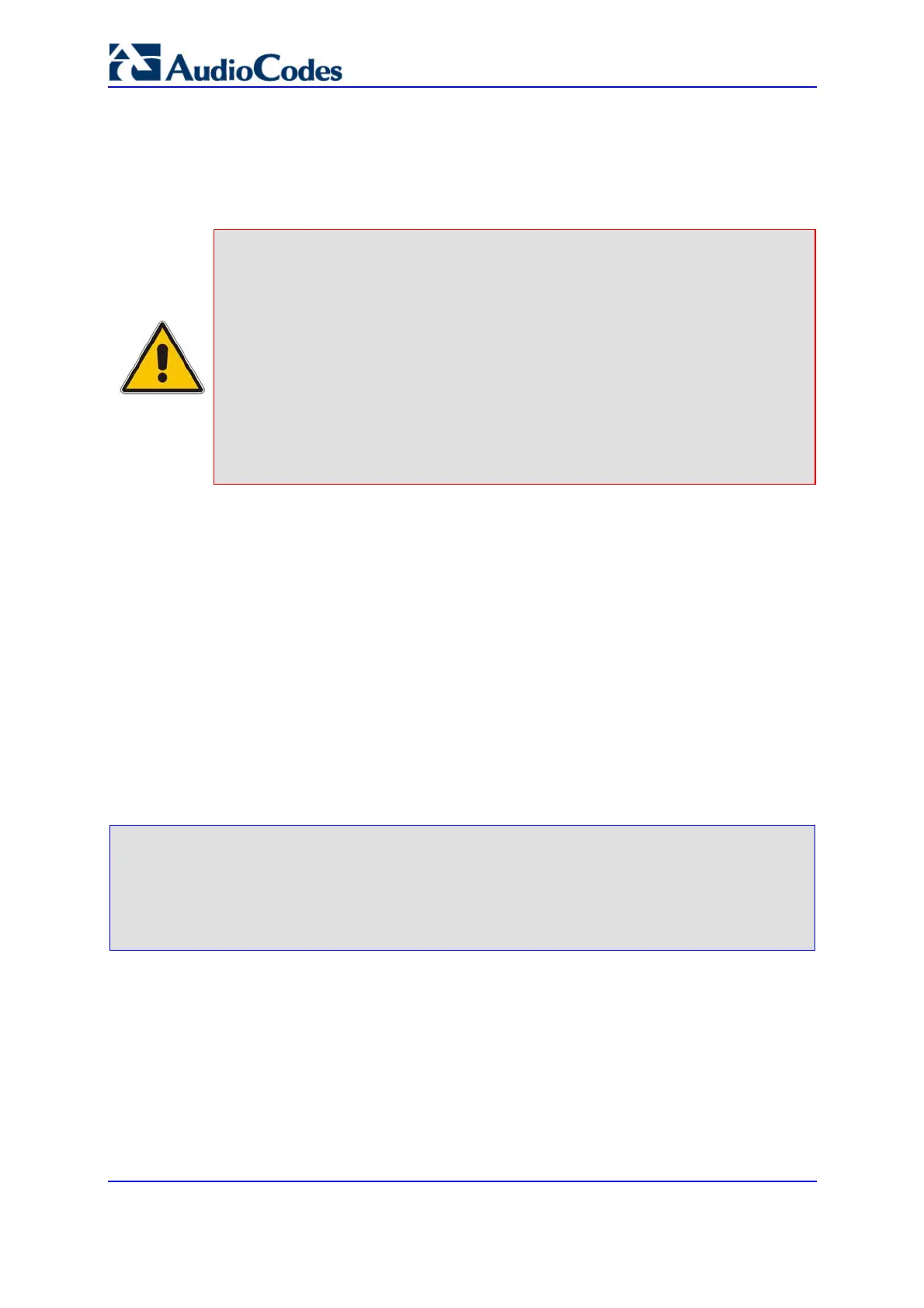SIP User's Manual 388 Document #: LTRT-68806
Mediant 2000 & TP-1610 & TP-260/UNI
To define an explicit Interface ID for a T1 trunk (that is different from the default), use the
following parameters:
ISDNIBehavior_x = 512 (x = 0 to 7 identifying the gateway physical trunk)
ISDNNFASInterfaceID_x = ID (x = 0 to 255)
Notes:
• Usually the Interface Identifier is included in the Q.931 Setup/Channel
Identification IE only on T1 trunks that doesn’t contain the D-channel.
Calls initiated on B-channels of the Primary T1 trunk, by default, don’t
contain the Interface Identifier. Setting the parameter ISDNIBehavior_x to
2048’ forces the inclusion of the Channel Identifier parameter also for the
Primary trunk.
• The parameter ISDNNFASInterfaceID_x = ID can define the ‘Interface ID’
for any Primary T1 trunk, even if the T1 trunk is not a part of an NFAS
group. However, to include the Interface Identifier in Q.931
Setup/Channel Identification IE configure ISDNIBehavior_x = 2048 in the
ini file.
9.4.2 Working with DMS-100 Switches
The DMS-100 switch requires the following NFAS Interface ID definitions:
InterfaceID #0 for the Primary trunk
InterfaceID #1 for the Backup trunk
InterfaceID #2 for a 24 B-channel T1 trunk
InterfaceID #3 for a 24 B-channel T1 trunk
Etc.
For example, if four T1 trunks on a gateway are configured as a single NFAS group with
Primary and Backup T1 trunks that is used with a DMS-100 switch, the following
parameters should be used:
NFASGroupNumber_0 = 1
NFASGroupNumber_1 = 1
NFASGroupNumber_2 = 1
NFASGroupNumber_3 = 1
DchConfig_0 = 0 ;Primary T1 trunk
DchConfig_1 = 1 ;Backup T1 trunk
DchConfig_2 = 2 ;B-Channel NFAS trunk
DchConfig_3 = 2 ;B-channel NFAS trunk
